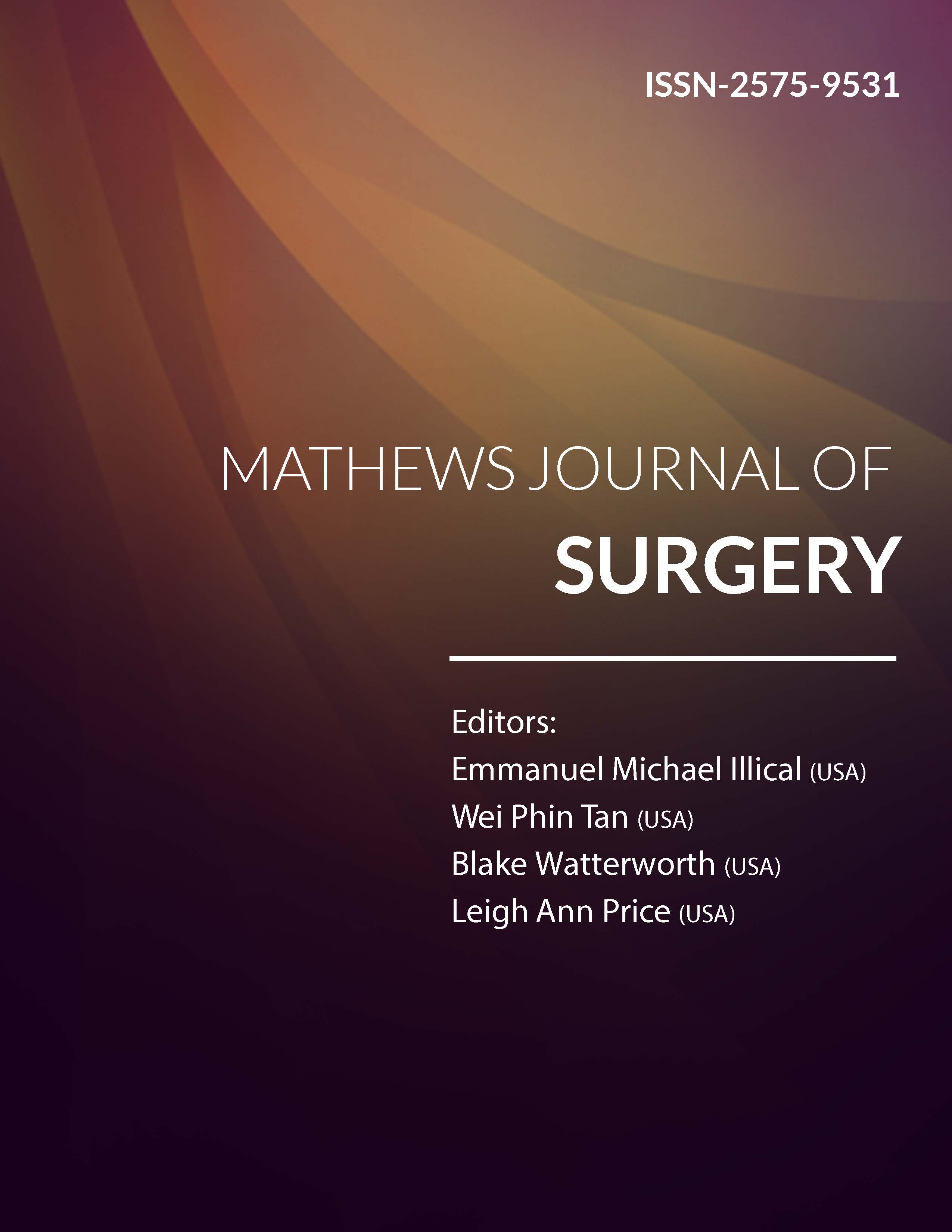
Information Links
Previous issues
Related Conferences
Previous Issues Volume 7, Issue 1 - 2024
Penetrating Femoropopliteal Vascular Injuries during Wartime in Yemen: Early Management Outcomes and Risk Factors for Limb Loss and Mortality
Nabeel Y Almadwahi1, Hamza Z Al-Hodiafy2, Mohammed A Al-Shuja’a3, Saleh A Alammari4, Haitham M Jowah5,*
1Department of Vascular Surgery, Faculty of Medicine, Sana’a University, Sana’a City, Yemen
2Department of Vascular Surgery, 48 Model Hospital, Sana’a City, Yemen
3Department of Vascular Surgery, Faculty of Medicine, Sana’a University, Sana’a City, Yemen
4Department of Vascular Surgery, 48 Model Hospital, Sana’a City, Yemen
5Department of Surgery, Faculty of Medicine, Sana’a University, Sana’a City, Yemen
*Corresponding author: Haitham M Jowah, Department of Surgery, Faculty of Medicine, Sana’a University, Sana’a City, Yemen, Tel: +967774831058; E-mail: [email protected].
Received Date: January 26, 2024
Published Date: February 12, 2024
Citation: Almadwahi NY, et al. (2024). Penetrating Femoropopliteal Vascular Injuries during Wartime in Yemen: Early Management Outcomes and Risk Factors for Limb Loss and Mortality. Mathews J Surg. 7(1):26.
Copyrights: Almadwahi NY, et al. © (2024).
ABSTRACT
Background: This study aimed to determine early management outcomes and to identify the risk factors associated with limb loss and mortality for penetrating femoropopliteal vascular injury during war in Yemen. Methods: This prospective study was conducted at the 48 Model Hospital, a military referral center in Sana'a, Yemen, from January 2020 to October 2023. This study focused on patients with penetrating femoropopliteal vascular injuries resulting from war-related trauma. Patients who experienced blunt trauma, primary traumatic amputation, or were treated outside the hospital were excluded. The study employed a structured questionnaire to collect data during the perioperative period and hospital stay, including patient demographics, pattern of injury, surgical repair methods, and early management outcomes. Results: We analyzed 65 cases of wartime femoropopliteal injuries and found that high-velocity gunshot wounds were the main cause (47.7%). Most patients were young males, with a median age of 25. Associated soft tissue injuries were present in 92.3% of cases, with severe crush injuries in 46.7%. Arterial injuries occurred in 90.8% of patients, predominantly affecting the popliteal artery (57.6%), while venous injuries occurred in 73.8% of patients, mostly involving partial transection of the popliteal vein. Nerve injuries were observed in 13.8% of cases and bone injuries in 21.5%. The primary arterial repair methods were reverse saphenous interposition graft (n=35) and primary reconstruction (n=18), whereas venorrhaphy and saphenous interposition graft were the most common venous repair methods. Intraoperative complications were seen in 7.7% of cases, and postoperative complications in 35.4%, with wound infection being the most frequent. The median hospital stay was 17 days, and secondary amputations were required in 4.6% of cases. The mortality rate was 3.4%. Limb salvage was achieved in 62 patients, with the majority (80%) achieving functional independence in ambulation. Predictors of secondary amputation included intraoperative complications, associated bone fracture injury, systolic blood pressure, hemodynamic instability, intraoperative ankle stiffness, and pulse rate. Predictors of mortality included systolic blood pressure, hemodynamic instability, postoperative ischemia-reperfusion injury, venous ligation, multiorgan failure, sepsis, and septic shock. Conclusions: Penetrating femoropopliteal vascular injuries during wartime in Yemen are challenging. We advocate for individualized treatment based on muscle viability and hemodynamic stability instead of ischemic time alone, and we emphasize the importance of shock, ankle rigidity, and IRI as crucial risk factors for amputation and mortality. We also recommend prioritizing venous repair over ligation and determining the sequence of surgical interventions based on intraoperative evaluations. We recommend further research to validate our findings.
Keywords: Penetrating Femoropopliteal Vascular Injuries, Wartime, Surgical Management Outcomes, Risk Factors, Ankle Stiffness, Ischemic Reperfusion Injury, Limb Loss, Mortality.